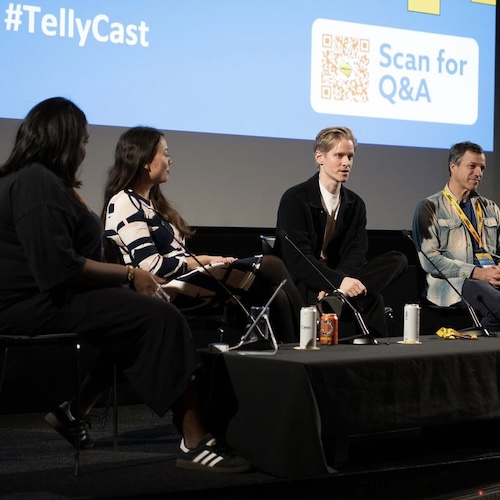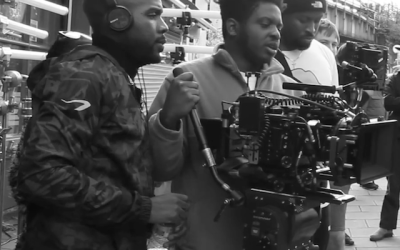Anyone publishing digital-first content has a wealth of data at their fingertips on how audiences are reacting to it. But how best to make use of that? A panel at the TellyCast Digital Content Forum today offered some advice on this and other digital strategy challenges.
The panel included Anna-Lee Bridgstock, executive director of data and product at Jungle Creations; Victor Bengtsson, managing director at Arcade Media and head of content for The Sidemen; and Graham Swallow, head of data and product strategy at Little Dot Studios. Annabel McLeod, head of digital & social media at Love Productions, moderated.
“When we speak to brands and people who are about to start channels, the question we ask is ‘do you know why you are on YouTube?’ And nine times out of ten they don’t,” said Bengtsson by way of introduction.
“Finding the niche is the first thing that we do,” he added, with an additional tip that there are two main paths to an audience on YouTube: your content has to answer questions that people search for, or be one of the videos recommended by its algorithm when people finish watching something else.
Bengtsson also warned that people underestimate the challenge of coming onto YouTube to compete with its native creators. “They do this for eight hours a day. Creators do it for 24 hours a day!” he said.
He also offered some specific advice on YouTube thumbnail images. “Kill off all brand. We don’t need to know that this thumbnail is from you, we need to know that it works on the platform,” he said. “It’s very simple: be simple. Be almost dumb!”
Swallow fielded a question about whether there is really money to be made on digital platforms, and talked about a recent top-10 show in the UK which gets around 5m views per episode.
“At the extreme end of stuff I’ve ose.. we’ve had a video that’s hit over $100 RPM [per thousand views]. That is insane numbers for YouTube, and it was specific to TV viewers in the US,” he said. But even if you halve that and are getting $50 RPM on a video with 5m views, the economics look positive.
Bridgstock agreed, suggesting that it’s eminently possible to make an eight-episode show for social media for $100k and generate $500k in revenue. “That’s $400k of profit already!”
The conversation moved on to digital-native creators making television shows, with The Sidemen having launched their own reality-TV show: Inside.
“We wanted to know: how hard is it to make Love Island? Turns out it’s pretty fucking hard! Which is good news for the people working in TV!” joked Bengtsson. But the show got 55m views in its first 10 days despite the fact that “the person who made it had never made a TV show in their life, which was terrifying!”
Running a lean team was key to that production: “Spend less on people that shouldn’t be getting paid,” was his advice. This also extends to the data teams within digital studios, as Bridgstock explained.
“I always hire on personality first. Your budget is low,” she said. “I always hire based on someone who has that hunger, that energy, and the skillsets that can shift.”
Little Dot Studios has around 500 staff, and only 10 of them are working on its data team. “We are lean!” laughed Swallow. But that small team can have a big impact. One project saw them analysing the company’s catalogue and content lengths to see where there might be gaps in serving audiences. “
“We doubled the revenue in about 30 days… across 100 channels. It was a massive change, a huge impact. And none of that came from the creative teams, it just came from crunching numbers,” he said.
Bengtsson offered some more no-nonsense views on team-building, saying that anyone coming into his operation with the belief that they’re making art is quickly set straight.
“It’s not art, it’s entertainment,” he said. “Whatever we’re creating, the idea is it has to be entertainment for an audience before it is fulfilling any kind of purpose in your artistic aspirations.”
That said, Bengtsson said that some of the trends on YouTube are moving in what some in the TV industry might see as a more artistic direction. “Narrative is coming back in a big way,” he said.
The conversation turned back to data, which Swallow said was absolutely key to YouTube’s value and importance. “If YouTube didn’t have data, it wouldn’t exist as a platform. It would be just another failed TV station!” he said.
Bridgstock outlined how Jungle Creations works with data, cross-referencing the costs and revenues for every asset it creates to understand what’s working and what needs to be culled. It also uses an AI tool that analyses all this content and tags it, cross-referencing that against revenues too to provide insights.
“What AI is doing really well is helping us find the trends that are happening. Instead of looking for what is happening, it will flag something up,” she said.
The session ended with a question about what each panelist has learned about the recommendation algorithms on the various social and video platforms.
“The algorithm doesn’t matter that much. You’re probably just not good enough at making videos!” said Bengtsson. “Don’t worry about the algorithm: just get better at making YouTube videos…”
“No one understands the algorithm, including within Google and YouTube,” said Swallow. But Bridgstock said that one recent lesson for her company has been a growing importance of community metrics like comments in pinging the recommendation engines.





